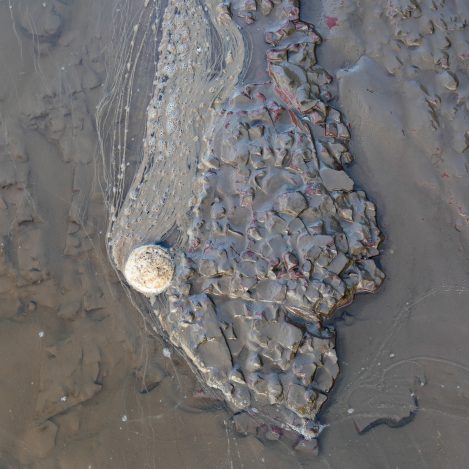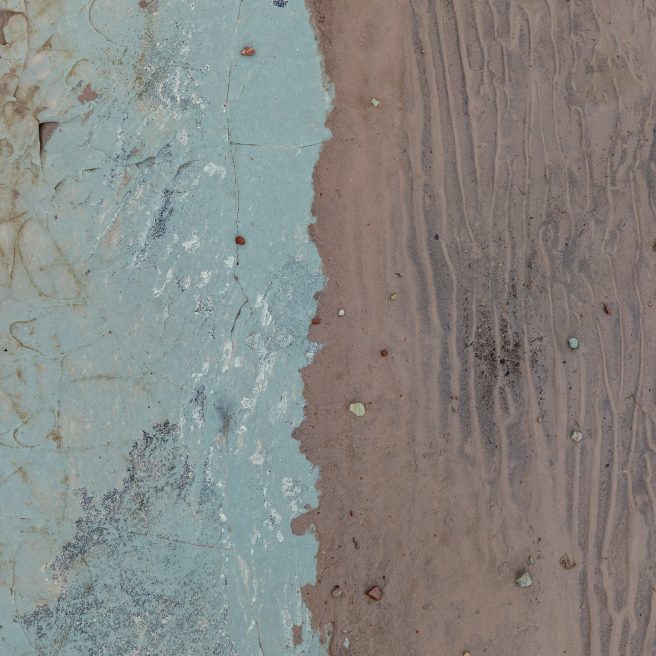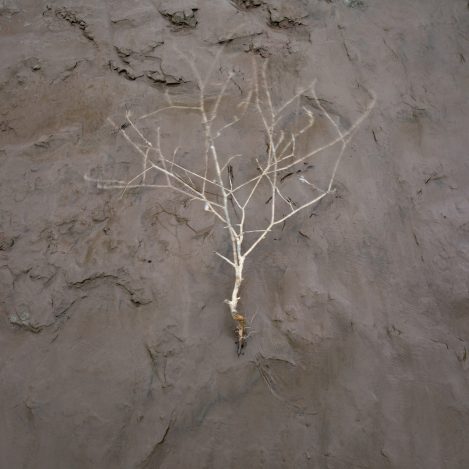A photographic series

Alexander Caminada
Alexander Caminada is a professional photographer based in the Cotswolds. While his early career focused on editorial and corporate commissions, he has always been deeply passionate about ecology and the wilderness. In recent years, he has shifted his focus toward landscapes, balancing this with his long-standing interest in portraiture and his exploration of experimental and abstract photography.
With over four decades of experience, Alex continuously pushes creative boundaries, particularly in non-representational photography. His work challenges traditional views of landscape photography, moving beyond literal depiction to explore texture, light, and emotion. By embracing abstraction, he seeks to capture not just the appearance of a place but its deeper essence and atmosphere. His recent projects have focused on the River Severn and the hills and valleys near his home in Stroud, using unconventional techniques to reimagine the natural world in unexpected ways.
Below the weirs at Gloucester, the movement of the tide on the River Severn reveals its powerful influence on the exposed riverbanks. With each ebb and flow, the landscape undergoes a subtle transformation as strong currents tirelessly shift mud, sand, and stones. This relentless movement crafts a dynamic topography, where the water meticulously sculpts the earth, carving out new shapes and contours. Debris briefly settles upon the banks, taking a moment to rest before the river, once again, sweeps it away on its continuous journey to new destinations.
I am a relative newcomer to landscape photography, having spent much of my career focusing on people and portraiture. My transition to landscapes has awakened a fascination for detail that I hadn’t previously recognised. In this series, I find myself drawn to the small, overlooked elements—square patches of riverbank no larger than a metre across, positioned directly beneath my tripod. These fragments distil the essence of the landscape into intimate compositions, revealing an elemental ecology that might otherwise go unnoticed. Finding the right patch requires a slow, deliberate walk, eyes scanning the ground ahead while ensuring I don’t leave a footprint in the wrong place and spoil the shot. This process has almost become an obsession for me–a treasure hunt for the next object, interesting pattern or shade of colour.
After The Tide began in 2020, initially as an offshoot of another project exploring the River Severn. It was the river’s tidal nature that captivated me—its twice-daily reversal of flow, carrying vast quantities of debris, both natural and human-made. The first time I witnessed an incoming tide, I was struck by the sight of huge trees drifting past at speed, like tall ships racing toward Gloucester—only to surge back out toward the sea hours later.
The river's many sandbanks serve as temporary resting places for some of these wayfaring objects, gently deposited and left until the next tide comes along. At Garden Cliff—a rapidly eroding wall of fossil-rich deposits on one of the river’s bends—this process is particularly visible. I’m captivated by how the Severn’s geology has formed into multi-coloured sandstone deposits; this fragile rock easily disintegrates, reshapes, and is washed away by the strong currents. The textures and shapes become integral to my compositions, with cracks in soft rock forming geometric patterns and asymmetric structures. Waves shape the sand into intricately flowing lines, and the occasional man-made object is a stark reminder of pollution and the fragility of the river’s ecology.
At 354 km, the River Severn is Britain's longest river, winding its serpentine route from the hills of Plymlimon in Wales to the Bristol Channel, gathering countless tributaries along the way. The estuary, stretching from Gloucester to the Second Severn Crossing, spans some 70 km, and it is here that the tide meets the outflow, creating the famous Severn Bore. This tidal wave—sometimes several metres in height—surges inland at speed, a challenge eagerly met by surfers who attempt to ride its advancing crest.
As anyone photographing in a dynamic environment will know, understanding the rhythms of nature is essential. This came to bear when I did not understand how the tide times affected the river. On my first walk along one of the exposed sandbanks, I had checked the tide tables and felt confident in my timing. Camera on tripod, bag heavy on my back, I was absorbed in composing a shot when I heard an ominous sound behind me—the unmistakable rush of water. I turned to see a wave, nearly a foot high, racing toward me. A clumsy, scrambling retreat up the riverbank saved me from being caught. It was only later, after some head-scratching, that I realised my mistake. At that location, the bore arrives a full hour before high tide. Now, I carry a bore calculator—and I’m far less inclined to venture onto the sands without careful planning.
Garden Cliff, in contrast, offers a more stable vantage point, where I can explore at low tide without the same immediate threat of rising water. These quieter moments—when the riverbed is most exposed—allow for a different kind of observation, one where I can take my time, fully immersed in the process. I’ve learned that creativity flourishes when I’m at ease with my surroundings, rather than battling against them.
This connection—the intense experience of being present in the landscape—has reshaped my approach to photography. It has made me realise that the final image is not the ultimate goal, but rather a record of the journey. The photograph becomes evidence, a trace of an experience that cannot be fully captured. This shift in perspective has changed how I see my own work. Perhaps it is a radical thought for a photographer as it changes the significance of our work and how we see it.














